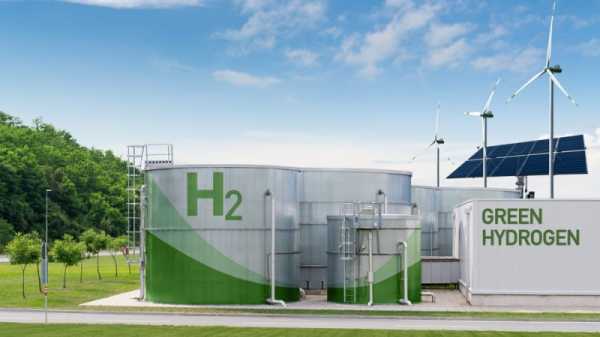
A joint declaration to cooperate on green hydrogen production was signed by Irish Climate and Environment Minister Eamon Ryan and Parliamentary State Secretary to the Federal Education and Research Minister Mario Brandenburg on Wednesday.
“This is a vote of confidence in Ireland’s energy potential and specifically our capacity to produce green hydrogen from our excess energy,” said Ryan.
“Our wind resources are amongst the best in the world. Hydrogen represents one of the best ways of capturing these resources and sharing them with European partners including Germany,” he added.
Green hydrogen is an energy carrier, seen as a way to help decarbonise European industry, including as a fuel for hard-to-electrify sectors, a fossil-free feedstock and an energy storage solution.
The process uses electrolysis to make hydrogen from renewable energy and water. This stored energy could then be transported and used elsewhere but requires significant power to produce.
Germany is and will remain a net importer of energy for the foreseeable future. The country’s hydrogen strategy estimates it will be able to produce just 20-30% of its hydrogen needs by 2030, meaning it is looking for partners to import from.
“This is why research partnerships with countries with abundant renewable energy sources like Ireland are so important for Germany and the EU at large,” said Brandenburg.
“The results of this cooperation between Ireland and Germany will help accelerate the EU’s energy transition and will help lead to a more energy-secure Europe,” he added.
Meanwhile, Ireland is one of the European leaders in offshore wind energy production. Realising the full potential of this resource will be a major opportunity for green hydrogen production, according to the Irish government.
Dublin has already set a target of five gigawatts of offshore energy by 2030. It is working on a National Hydrogen Strategy and aims to dedicate a further two gigawatts of offshore wind energy to hydrogen production.
According to the Irish government, this could provide up to six terawatt hours of zero-carbon energy – equal to 10% of the electricity sector’s total final energy needs, 21% of industry needs or 6-7% of total transport needs.
One of the major questions surrounding renewable hydrogen is which sectors it will be used in. It is likely to be an expensive and scarce resource, particularly in the short term, and some argue it should only be used in areas where direct electrification is not possible.
When finalised, Ireland’s hydrogen strategy should set out the country’s vision for how hydrogen will be produced and used, providing certainty for investors and the industry.
(Kira Taylor | EURACTIV.com)
Read more with EURACTIV

French senate confirms alarming increase of drug shortages
Source: euractiv.com



